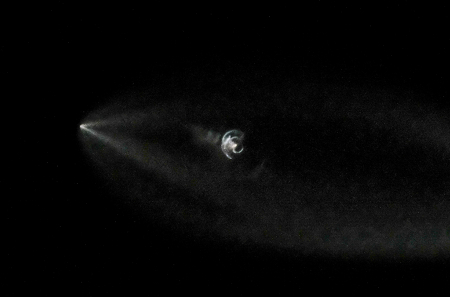A Ukrainian Zenit rocket with a Russian Fregat upper stage successfully launched Angola’s first communications satellite into orbit today. [Update: While the rocket succeeded, it appears there is a problem with the satellite, which Russia built for Angola. Engineers have lost contact with it.]
The launch occurred earlier today, but it took nine hours for the Fregat upper stage to complete several engine burns and maneuvers to place the satellite in the correct orbit. Considering that it was a Fregat upper stage that caused the launch failure of a Soyuz rocket last month, it seemed wise to wait for these maneuvers to complete successfully before announcing this launch a success.
That Russia and Ukraine worked together to make this happen is quite amazing, considering that the two countries are essentially still fighting a war against each other. It also indicates, as noted by this article, that the future of Zenit and the Ukrainian rocket industy might not be dead.
Angosat 1 was originally supposed to blast off on a Zenit rocket from Sea Launch’s commercial ocean-going platform in the Pacific Ocean. But Sea Launch flight operations ceased in 2014, and Russian officials considered launching Angosat 1 on the heavy-lift Angara 5 rocket before deciding last year to put the satellite on a fully-assembled Zenit booster already in storage at the Baikonur Cosmodrome.
At the time of the last Zenit launch in December 2015, there were no more missions on the Ukrainian-made rocket’s manifest, leaving the Zenit program’s future in question.
But with the switch of Angosat 1’s launch to a Zenit rocket, and the purchase of Sea Launch infrastructure mothballed in Long Beach, California, by a commercial Russian airline company, there are plans for the resumption of Zenit missions in the future. The new Sea Launch company, called S7 Sea Launch, ordered a dozen new Zenit launch vehicles from Yuzhmash in April for ocean-based missions and flights staged from the Baikonur Cosmodrome. Another Zenit rocket is slated to launch a long-delayed Ukrainian telecom satellite from the Baikonur Cosmodrome next year.
This launch also probably closes out the launch schedule for 2018, with the standings as follows:
29 United States (including all companies)
20 Russia
18 SpaceX
17 China
Russia, China, and SpaceX have all indicated that they are aiming for a launch rate of about 30 launches per year. If that happens in 2018, we could see the most rocket launches next year since the late 1980s.


